Bespoken Word – testing stuff properly is not that simple and that’s why I love it
Guy Kesteven gets a load off his chest about bikes in general and how back-to-back testing is always the key to the most accurate results.
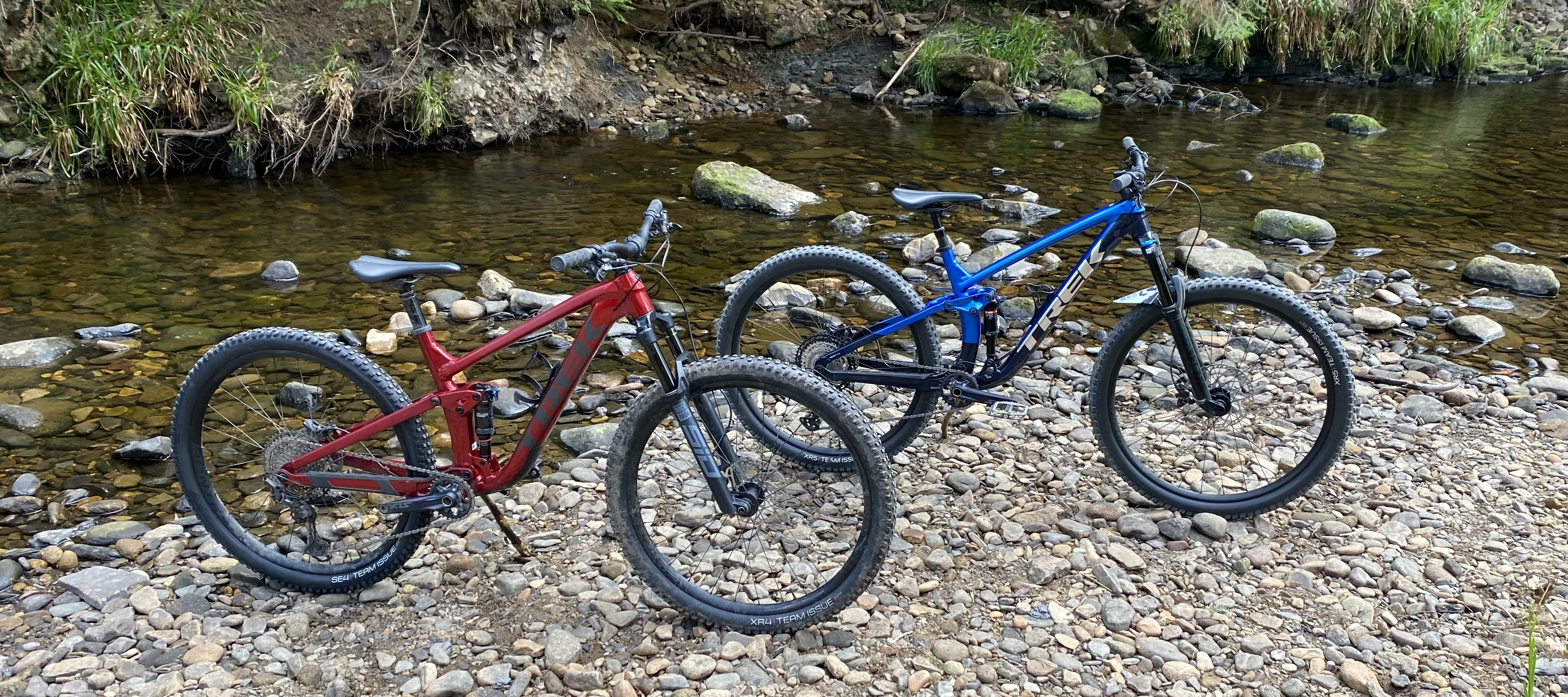
Even before hype starts herding you in a suggested direction there are some things that will clearly perform in a particular way. Slick tires, stripped down single-ring transmissions, skinny steel tubes versus alloy and carbon, bigger volume rubber, dial tightened shoes, longer travel versus shorter. They all have obvious physical properties that school science says will dominate how they work or feel. Or that’s what you’d think.
Recently though I’ve had a real run of test kit and bikes that have totally flown in the face of initial expectation. But that’s what makes this job absolutely fascinating and underlines why clean slate, direct comparison testing of as much stuff as possible is always the way to go for real, contextualized conclusions.
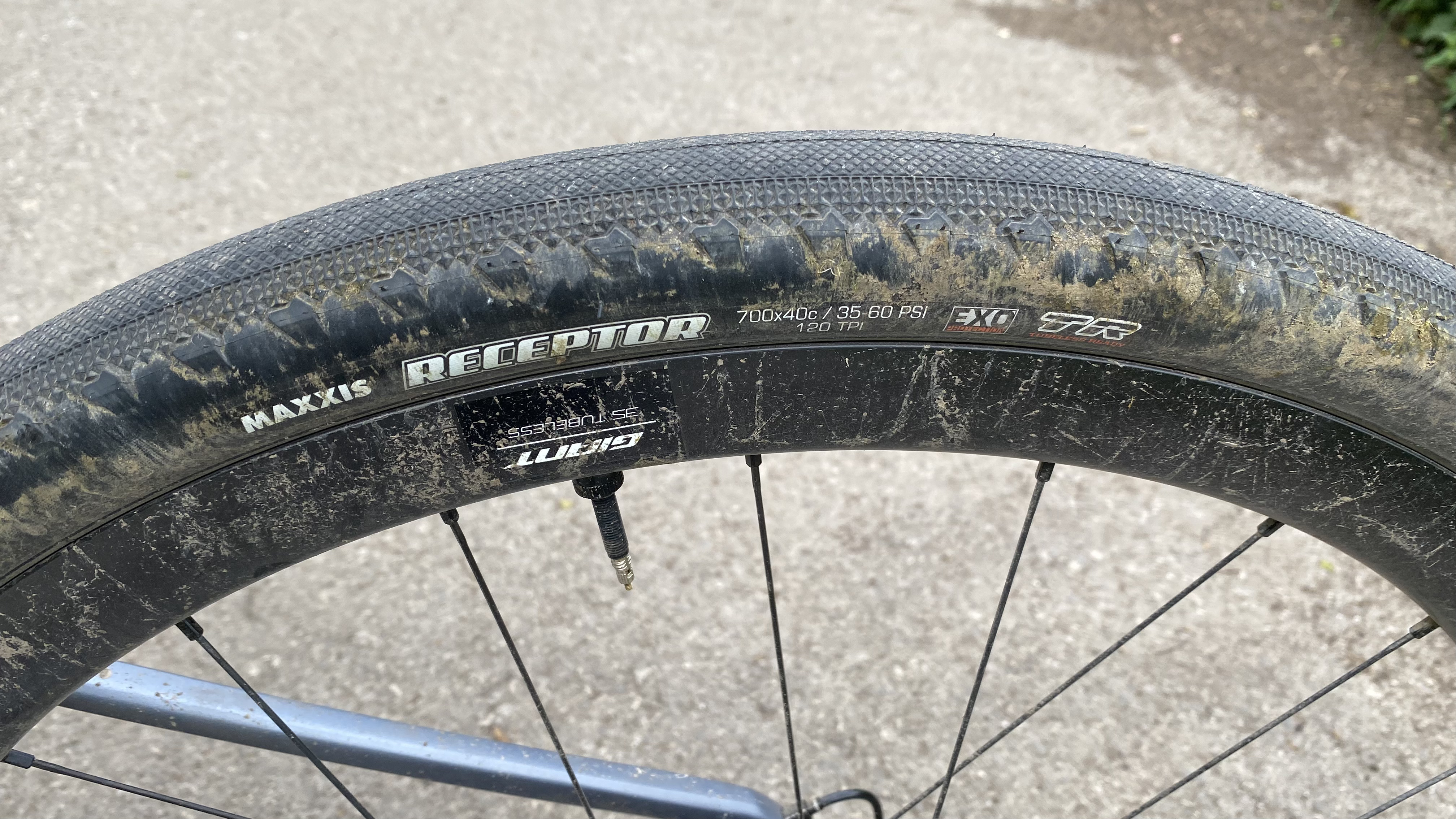
Cake vs bread
For example I’m just finishing up a review of a Giant gravel bike – woah hang in there, even if you prefer 800mm risers to 440mm drop bars, this is relevant – that comes as standard with essentially slick Maxxis Receptor tires. And as you’d expect they were so sketchy off-road, even in dry and dusty conditions, that I rapidly renamed them Maxxis Defecators on account of the state they left my shorts in. But a total slick tread has to be way faster rolling than a knobblier, MTB derived tread though surely (and I’ve seen several reviewers of the same bike say this). Well no actually. Smooth? Yes. Quiet? Yes. Light? Yes. But they roll like a pair of dehydrated slugs, to the point where other riders kept running into me from behind on freewheeling descents. Experience is a wonderful thing though so I wasn’t entirely surprised, because I’ve had similarly crushing, “where’s the extra speed I was wanting?” results from the Maxxis Minion SS MTB semi-slick. In fact while Maxxis tires set the benchmarks in every MTB sector, their road tires have been consistently so slow in all my years of testing that they used to be a key part of my old contention that brands that make great road tires make crap MTB tires and vice-versa – in the same way that bakers who make great cake make awful bread. But TBH that doesn’t hold true so much anymore. Well not with tires from the likes of Schwalbe (who incidentally make an incredible hardcore semi-slick option in the Rock Razor), Continental, Hutchinson and Specialized anyway. You still won’t find me getting a loaf and a vanilla slice from the same shop unless I’m absolutely desperate though.
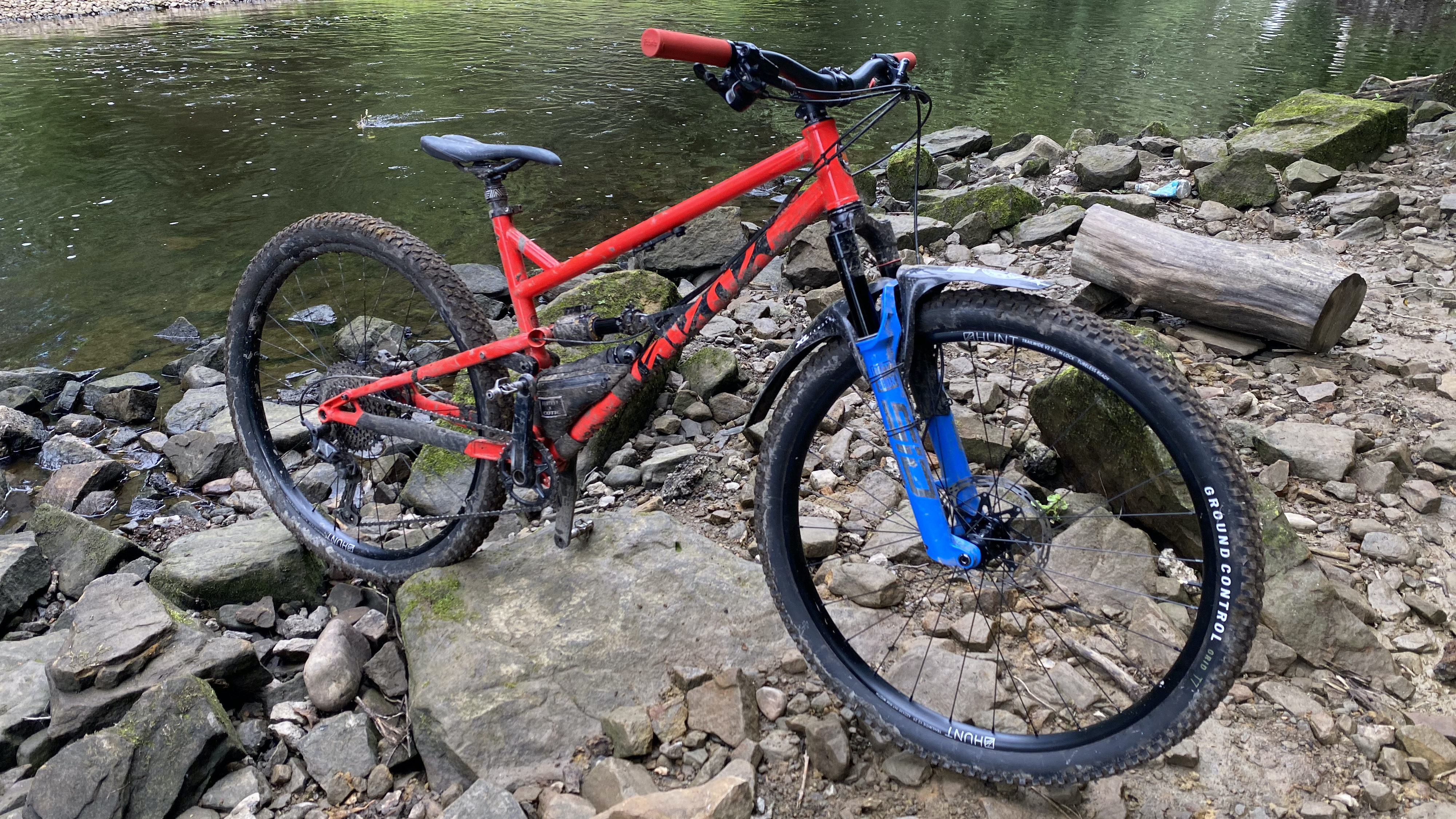
And there are loads of other examples where bikes and products buck seemingly obvious trends. Reynolds 725 and Columbus Spirit look like all the other wonderfully lithe, life-full steel tubesets that you can use to build into the kind of bikes you write poetry about. Unless there’s a magician involved in making the frame though, they generally feel like gas pipe garbage. I could say the same about a lot of ‘premium’ titanium frames where the promise of Bambi-like effervescence has been killed as dead as the cartoon deer’s mum by too much shaping or general overworking. Meanwhile Specialized and Cannondale are turning out alloy frames that ride with all the promised subtlety, spring and orgasmic joy of steel and titanium but at a fraction of the weight and price respectively.
What else do I need to pop the balloon on? Oh yeah, despite looking like stripped down weight wins, single-ring transmissions are generally just a few grams lighter than multi-ring. Because that big cassette and clutch mech weigh basically the same as a front mech, a bit of cable and an extra shifter.
Carbon cranks, bars and stems can be as ‘is this broken?’ flexy or bone-jarringly stiff as the designer wants them to be – or whoever laid them up in the factory while concentrating more on the radio sports scores actually made them.
For the most part those undeniably pretty but often 'tiptoeing along machine made stress lines' or just 'too hollowed out to be stiff' stems can’t compete with a nice cheap, chunky ingot that’s been forged and then left alone.
Never assume
You can’t trust numbers either. I don’t just mean because I tested a bike this week that was a kilo heavier than the website says it was and the last '2.3in' tire I measured was only 2.16-inches across. Or that actually measuring reach, wheel travel and angles properly will often reveal a very different result to cross referencing the published geometry.
I mean that some bikes can genuinely feel far lighter than they are. Which is why my steel framed, 'twangy as a shatterproof ruler' Cotic FlareMax climbs like a rat escaping a flooding sewer, while the much lighter, carbon Canyon Lux Trail I tested a few months back seemed resigned to being swept into the estuary of merely adequate altitude gain in a tide of effluent. On a similar note it turns out that Trek’s Fuel siblings completely flip ride expectations too. The longer travel, fatter tire, heavier Trek Fuel EX 8 feels as uptight and efficient as that aunty who runs marathons for religious charities. Meanwhile the while the shorter travel Top Fuel 8 gives me the same vibe as my mate who used to break into high security animal labs just for the ketamine.
And just like him I could rave on and on about stuff like this until your head properly got bent. About how those big fat tires that look so comfy actually hurt way more than thin ones unless you drop pressure dramatically. And I mean DRAMATICALLY. And if you don’t believe me there’s some really good science on the Silca website about area loading and hysteresis to show why. Or you could just stop gritting your teeth while expounding the voluptuous virtues of your ‘emperor's new tires’ and actually do some back-to-back testing.
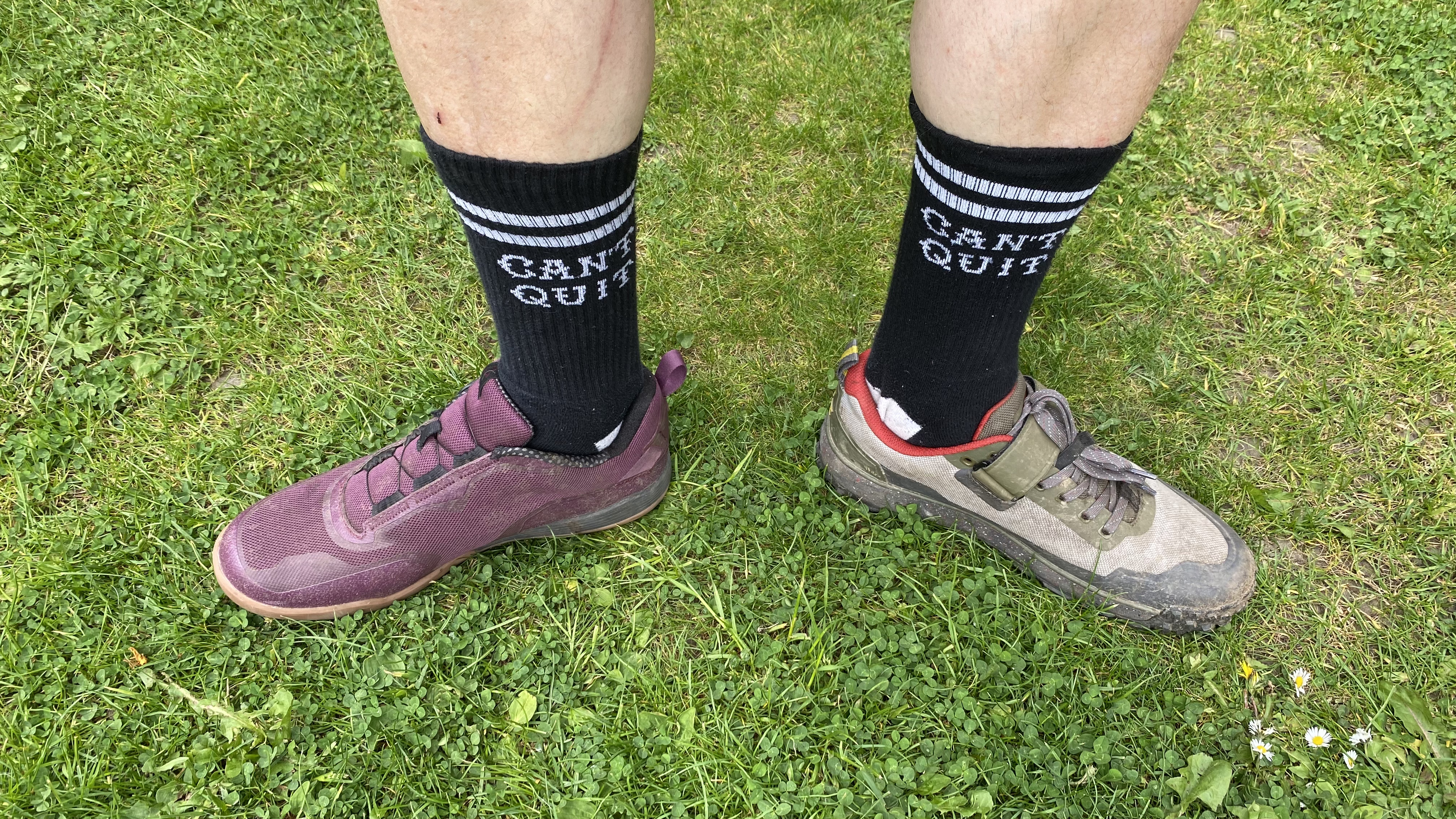
And I mean proper back-to-back testing. Not ride those on this ride and then those on that ride. Or even on different bikes. Because even if they have the same fork/wheel/bar and you ride on the same trail trying to hit the same lines at the same speed it’s not the same. No, what you need to do is swap the components in question and ride them and swap them repeatedly. Spitting and rinsing like some pretentious wine tester determined to find an earthy finish or a bilberry top note. Not swigging the whole bottle and then trying to work out how they compared on subsequent days separated by a hangover.
That's why you’ll generally find me riding about in odd shoes and gloves, possibly with another non-pair in a backpack. Because laces vs ratchet vs dials isn’t as simple as scissors vs paper vs stone and EVERYONE says their sole is a perfect balance of pedaling and power delivery. It also explains why I hang about trail head car parks like a 14 year old outside an off-license, asking if I can have a quick go on somebody else’s bike just to double-check how a tire rolls or a fork feels before I start wearing more holes in my keyboard.
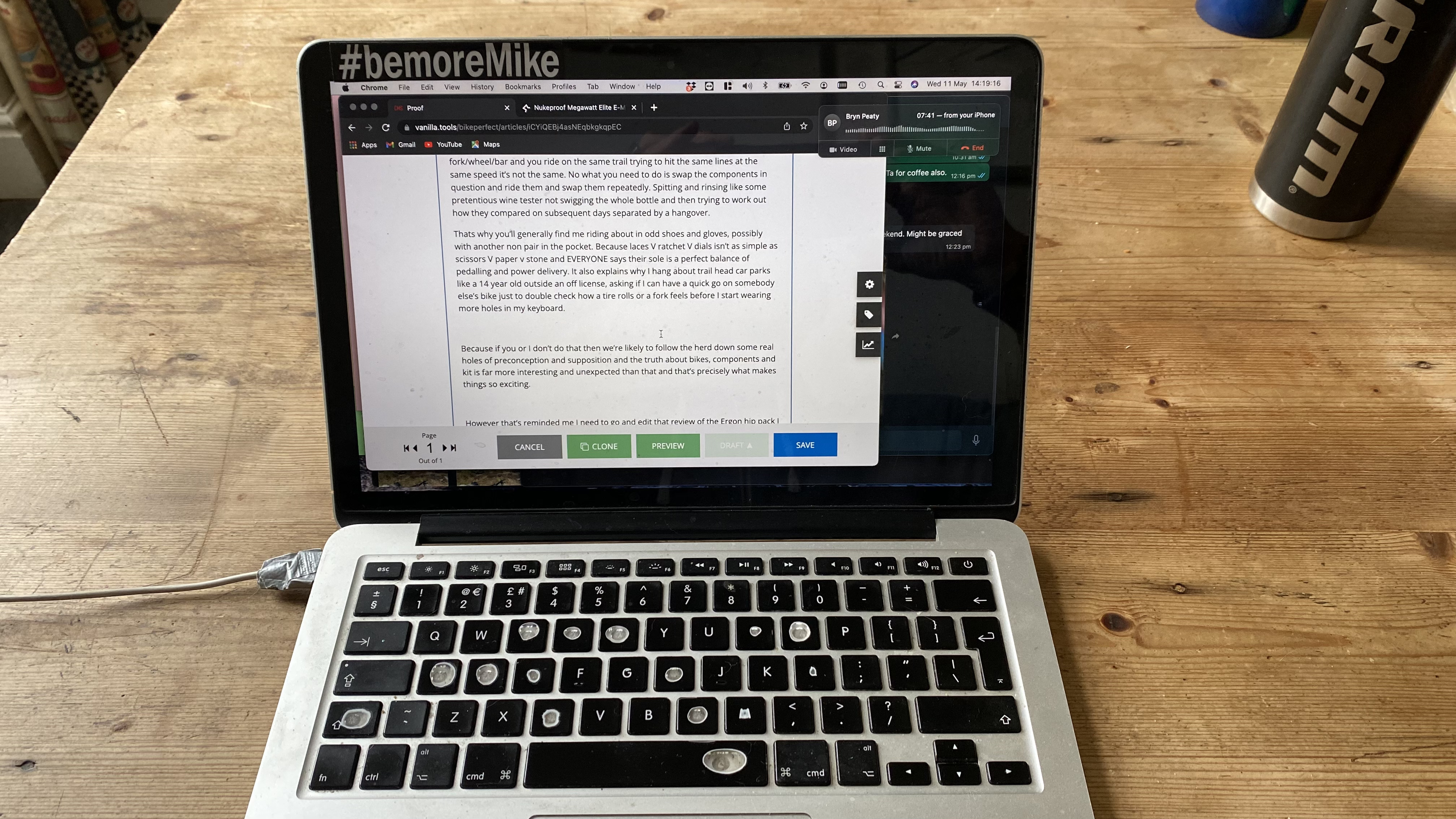
Because if you or I don’t do that then we’re likely to follow the herd down some real holes of preconception and supposition. And that would be a real shame as the truth about bikes, components and kit is far more interesting and unexpected than that and that’s precisely what makes riding bikes so exciting.
However that’s reminded me I do need to go and edit that review of the Ergon hip pack I wrote though. Because it turns out that while I still wouldn’t trust it for mountain biking, the Velcro strapped phone holster is actually awesome for quick access if you’re out taking pictures for a gravel route write up. But then that’s the other thing that’s great about testing these days. Because the internet is infinite and editable I can keep refreshing my ramblings and ratings ad infinitum.
I’m definitely sure Maxxis should rename those tires Defecators though…
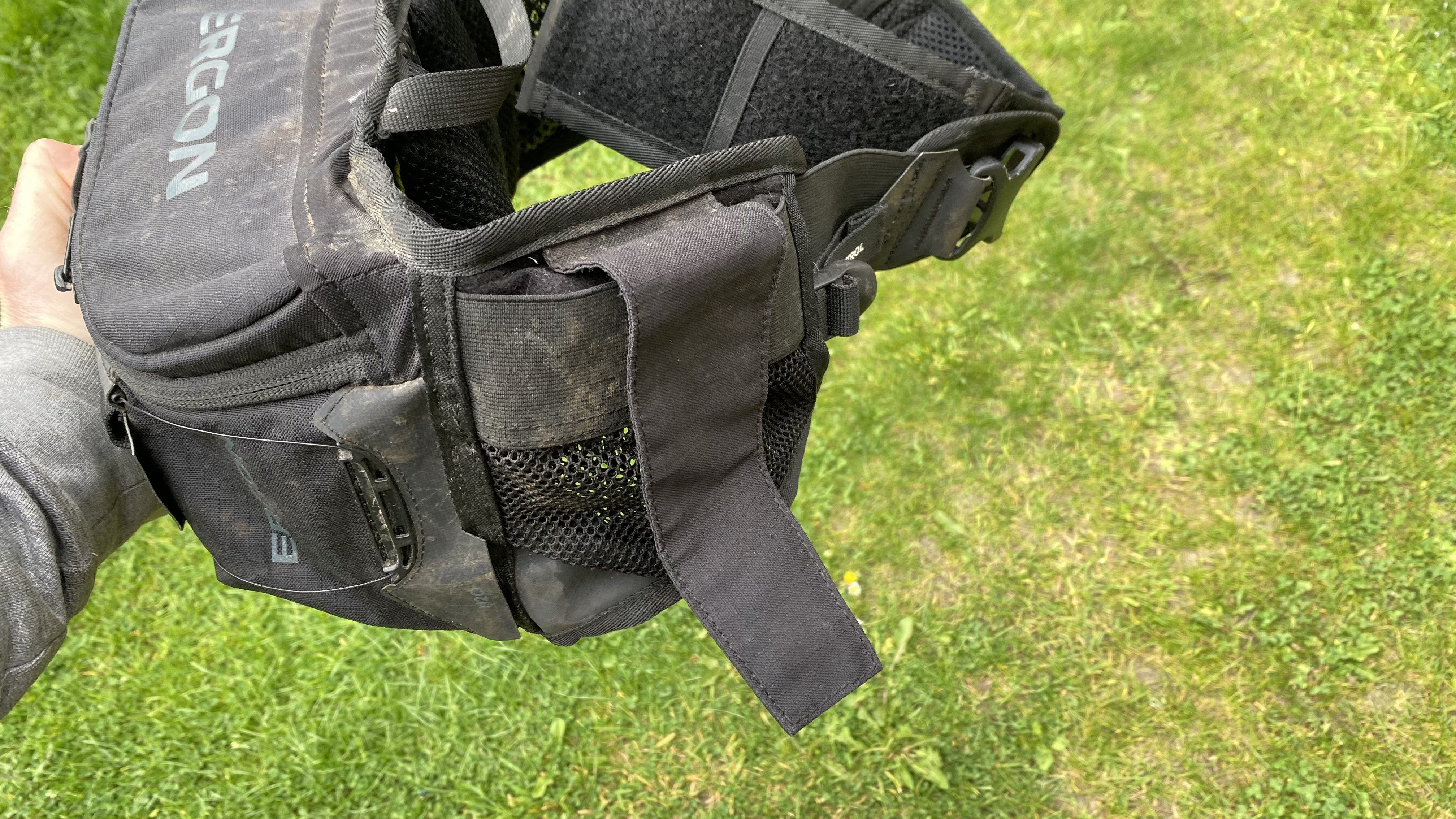

Guy Kesteven has been working on Bike Perfect since its launch in 2019. He started writing and testing for bike mags in 1996. Since then he’s written several million words about several thousand test bikes and a ridiculous amount of riding gear. He’s also penned a handful of bike-related books and he reviews MTBs over on YouTube.
Current rides: Cervelo ZFS-5, Specialized Chisel, custom Nicolai enduro tandem, Landescape/Swallow custom gravel tandem
Height: 180cm
Weight: 69kg
- Guy KestevenTechnical-Editor-at-Large
